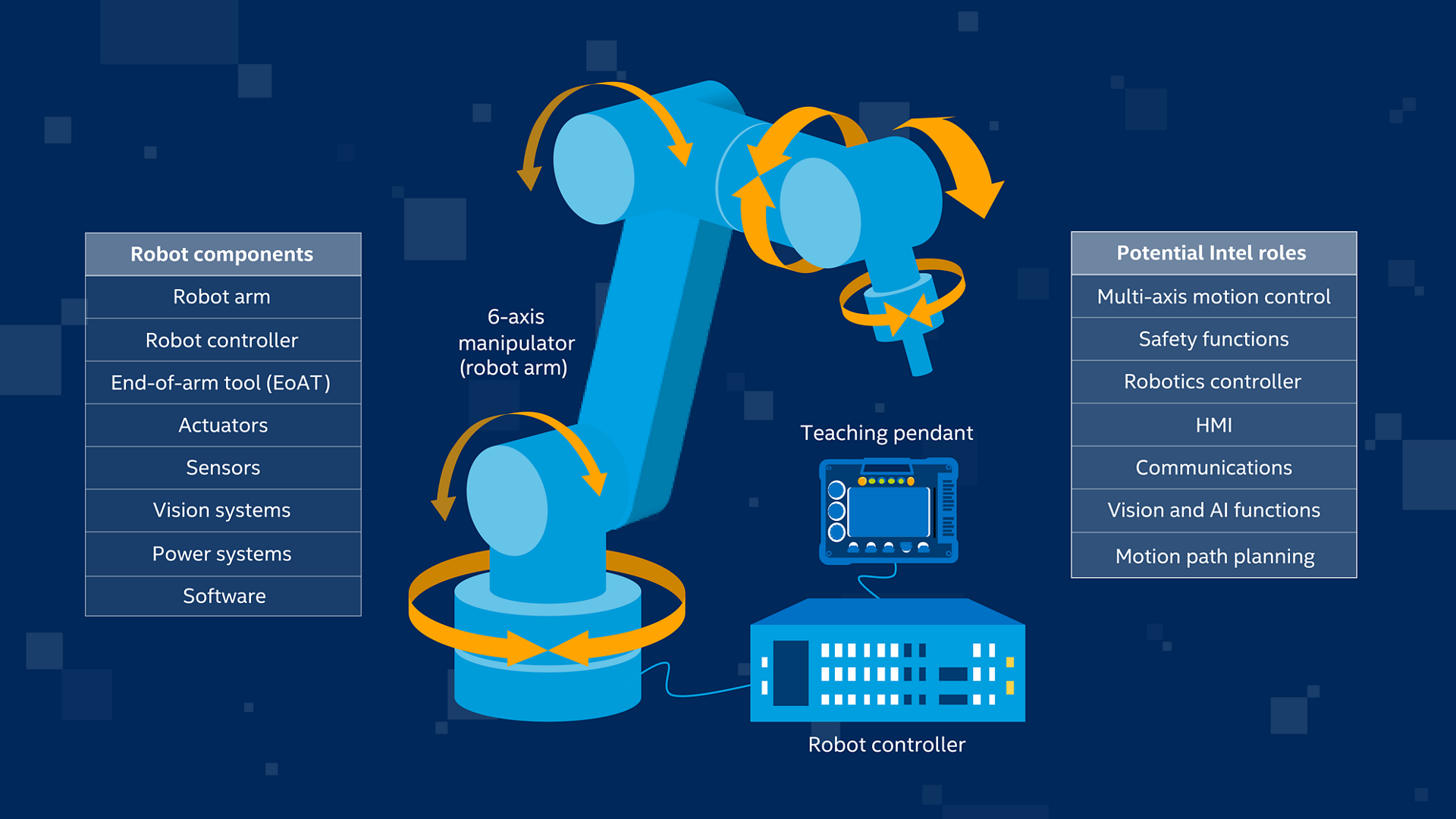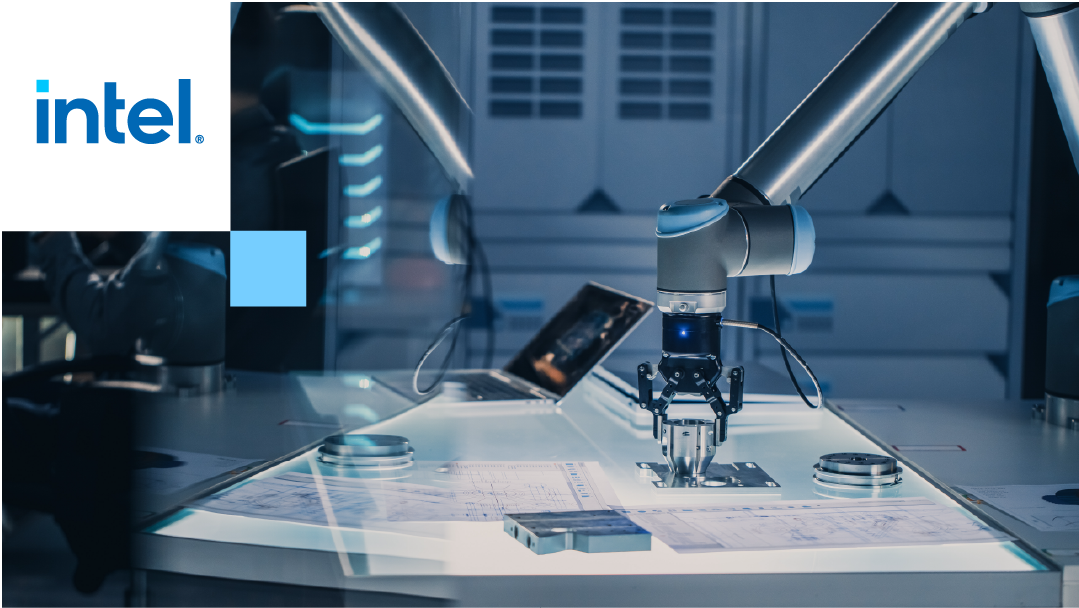Stationary Robot Vision & Control#
About Intel® RVC#

Robotics Pick and Place in Industrial Fields#
Problem description#
Robotics pick and place is a critical task in industrial automation where robots are employed to manipulate objects from one location to another within a manufacturing environment. This process involves the accurate identification, grasping, and relocation of items, contributing significantly to the efficiency and productivity of various industrial operations.
Challenges#
The robotics pick and place task presents several challenges that need to be addressed for successful implementation:
Object Detection and Recognition: Efficiently identifying objects in varying orientations, shapes, and sizes within cluttered environments is essential for successful pick and place operations.
Grasping and Manipulation: Developing robust grasping strategies to securely hold objects of different textures, weights, and fragilities is crucial for preventing dropped items and ensuring smooth manipulation.
Path Planning and Navigation: Optimizing the robot’s trajectory to minimize travel time and avoid collisions with obstacles or other machinery is necessary to enhance operational efficiency and safety.
Real-time Adaptation: Ability to adapt to dynamic changes in the environment, such as variations in object position or unexpected obstacles, is essential for maintaining uninterrupted workflow.
Integration with Manufacturing Systems: Seamless integration of robotic systems with existing manufacturing processes and technologies, such as conveyors or assembly lines, is vital for achieving cohesive and synchronized operations.
Solutions#
To address the challenges associated with robotics pick and place in industrial fields, various solutions are being developed and implemented:
Advanced Sensing Technologies: Utilizing advanced sensor technologies, such as 3D vision systems and depth cameras, for accurate object detection and recognition in complex environments.
Robotic Grippers and End Effectors: Designing specialized grippers and end effectors equipped with tactile sensors and adaptive mechanisms to enhance grasping capabilities and accommodate diverse object types.
Algorithmic Innovations: Developing sophisticated algorithms for path planning, collision avoidance, and real-time decision-making to optimize robot movements and adapt to dynamic scenarios.
Machine Learning and AI: Leveraging machine learning and artificial intelligence techniques for intelligent perception, grasp planning, and adaptive control, enabling robots to learn from experience and improve performance over time.
Interoperability and Connectivity: Establishing standardized communication protocols and interfaces to facilitate seamless integration between robotic systems and existing manufacturing infrastructure, promoting interoperability and data exchange.
Conclusion#
Robotics pick and place plays a pivotal role in modern industrial automation, offering significant potential for enhancing efficiency, productivity, and flexibility in manufacturing processes. By addressing the challenges and leveraging innovative solutions, businesses can harness the full capabilities of robotic technologies to optimize operations and drive sustainable growth.
Robot Vision and Control aims at tackling the problematics and offers a flexible and versatile framework to solve the majority of use cases in Industrial fields
Robot Vision and Control is a robotic software framework aimed at tackling Pick and place, Track and place industrial problems.
